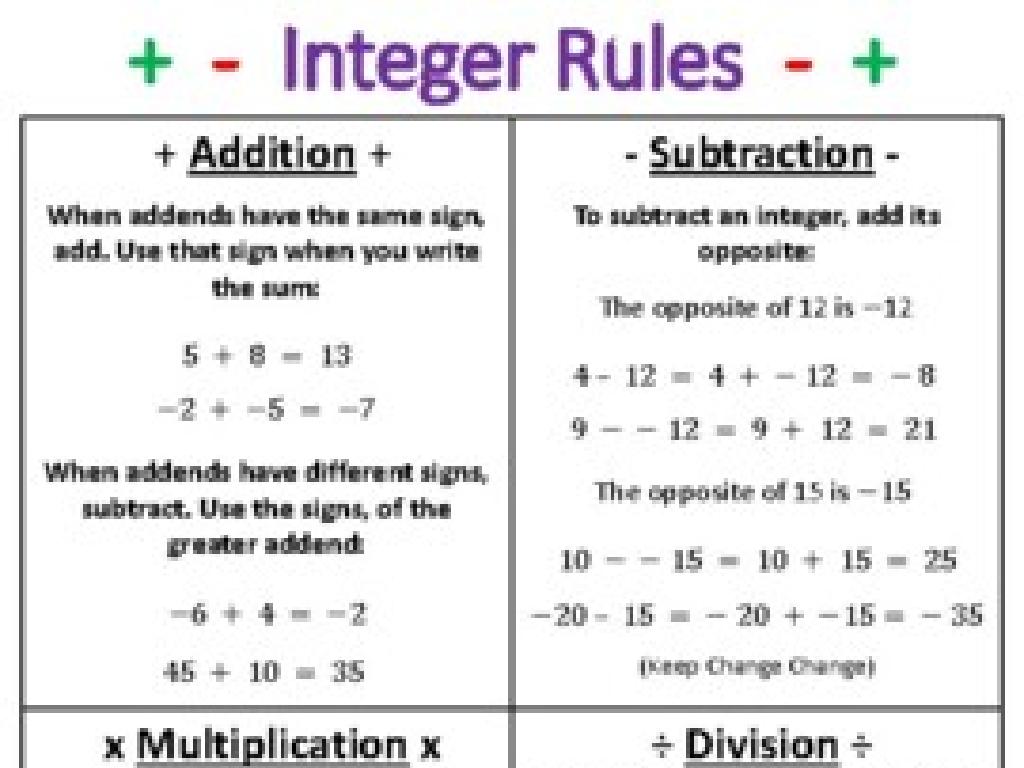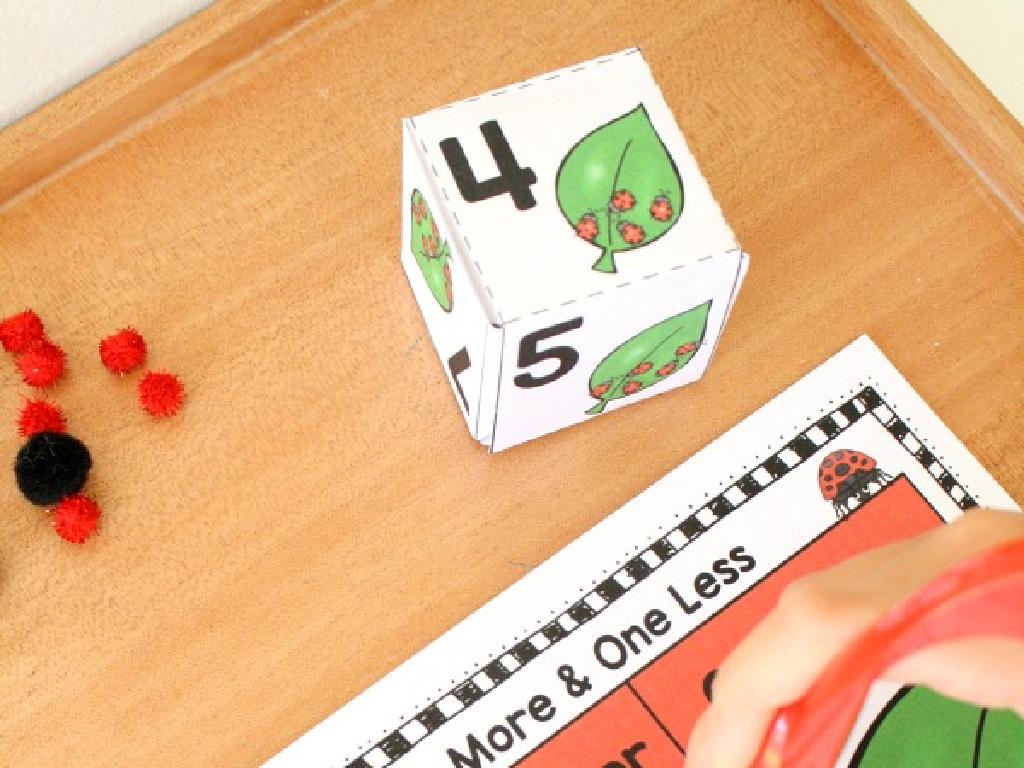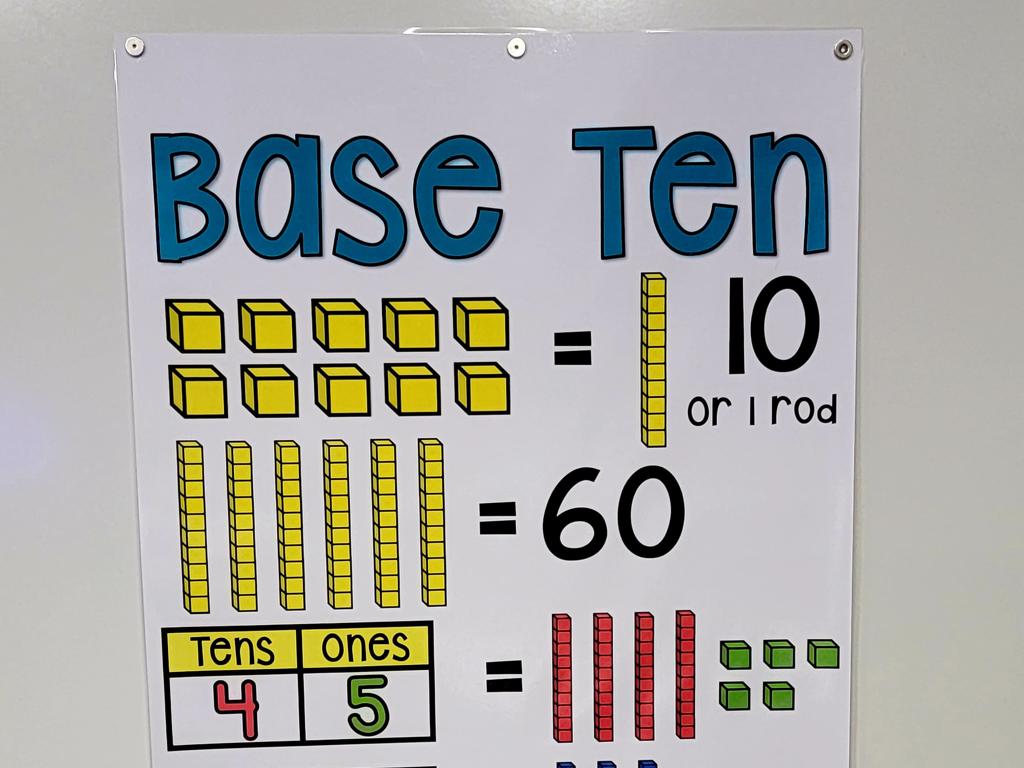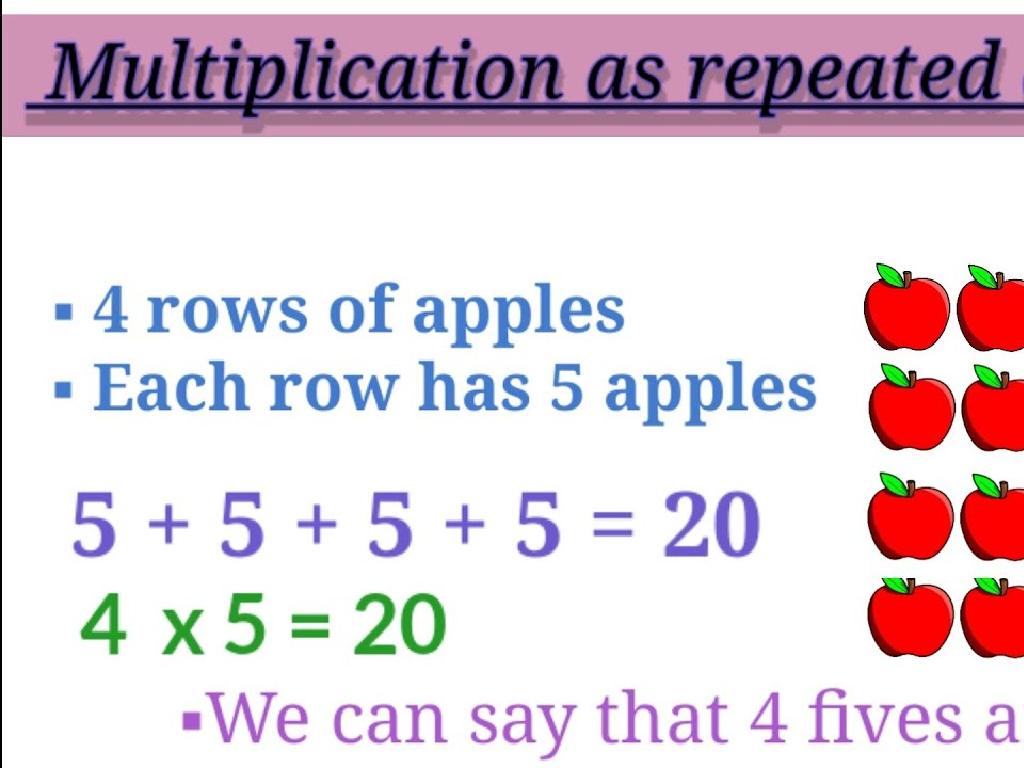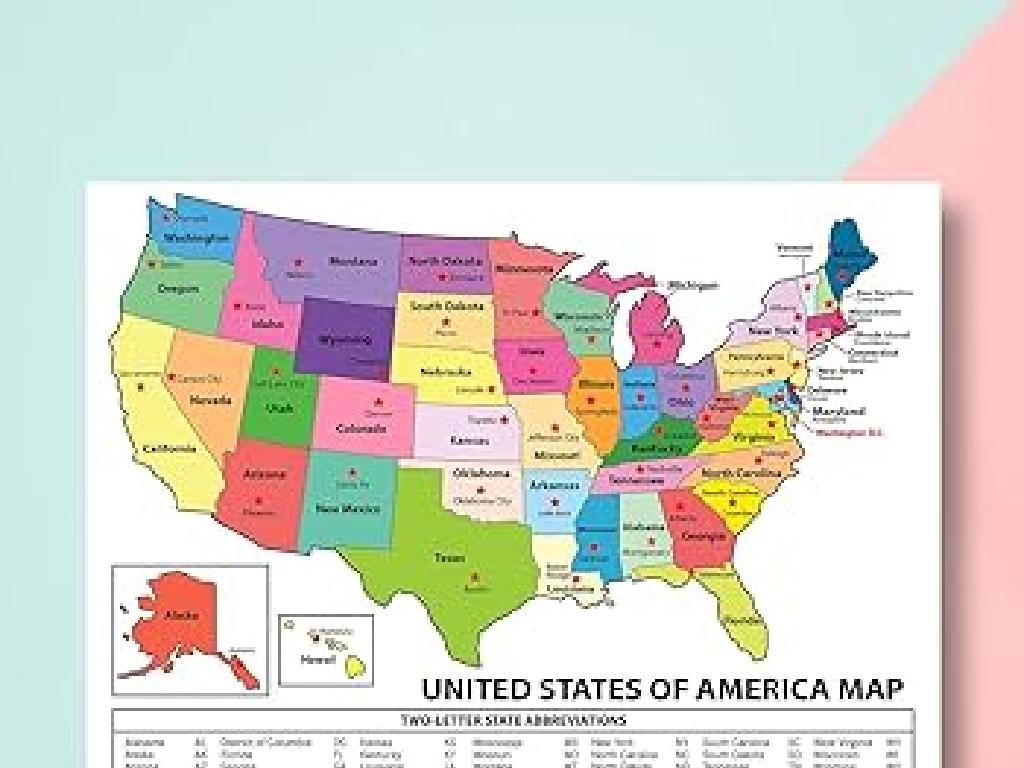Fractions: Word Problems With Graphs And Tables
Subject: Math
Grade: Seventh grade
Topic: Fractions
Please LOG IN to download the presentation. Access is available to registered users only.
View More Content
Fractions: Word Problems with Graphs & Tables
– Understanding fractions: parts of a whole
– A fraction represents a part of a whole, like a slice of pizza.
– Real-life examples of fractions
– Examples: pizza slices, measuring cups, and money (quarters).
– Interpreting fractions from graphs
– How to read pie charts and bar graphs to find fractional parts.
– Solving word problems with tables
– Using tables to organize information and solve fraction problems.
|
This slide introduces students to the concept of fractions as parts of a whole, providing a foundation for understanding how they are represented in graphs and tables. Real-life examples help students relate fractions to everyday situations, making the concept more tangible. Emphasize the importance of interpreting graphical data, such as understanding what a fraction of a pie chart represents or how to read a fraction on a bar graph. Teach students to use tables to organize fractional data and solve word problems. This will enhance their analytical skills and ability to work with fractions in various contexts.
Recap: Understanding Fractions
– Definition of a fraction
– A fraction represents a part of a whole
– Numerator and Denominator roles
– Top number (numerator) and bottom number (denominator)
– Types of fractions explained
– Proper fractions have a numerator smaller than the denominator, improper fractions have a larger numerator, and mixed numbers combine a whole number with a fraction
– Examples: Proper, Improper, Mixed
– Proper: 1/4, Improper: 5/3, Mixed: 2 1/2
|
Begin with a brief review of what a fraction is, emphasizing its role in representing parts of a whole. Clarify the roles of the numerator and denominator, ensuring students understand that the numerator indicates how many parts are being considered, while the denominator shows the total number of equal parts in the whole. Discuss the differences between proper, improper fractions, and mixed numbers, providing clear examples for each. This foundational knowledge is crucial for solving word problems involving fractions, as it helps students visualize and manipulate parts of a whole in various contexts.
Interpreting Graphs with Fractions
– Reading fractional values on graphs
– Identify the numerator and denominator represented on the graph’s axis.
– Comparing fractions on bar graphs
– Use bar heights to determine which fraction is greater or lesser.
– Example: Student lunch preferences
– A bar graph showing the fraction of students who prefer pizza, sandwiches, or salads.
|
This slide aims to teach students how to interpret fractional values on various types of graphs, with a focus on bar graphs. Start by explaining how to read the numerator and denominator on the graph’s axis. Then, demonstrate how to compare fractions by looking at the height of the bars on a bar graph. Use an example relevant to the students, such as the fraction of students who prefer different lunch options, to make the concept more relatable. Encourage students to practice by interpreting graphs and comparing fractional values. This will help them develop critical thinking skills and better understand data representation.
Understanding Tables with Fractions
– Read tables with fractions
– Convert fractions to decimals
– Use division to change a fraction into a decimal
– Convert fractions to percentages
– Multiply the decimal by 100 to find the percentage
– Example: Homework time table
– Table may display 1/4 hour as 0.25 or 25%
|
This slide aims to teach students how to navigate through tables that include fractional data. Start by explaining how to read and interpret the information presented in tables with fractions. Then, guide students through the process of converting fractions into decimals by dividing the numerator by the denominator. Next, show them how to convert these decimals into percentages by multiplying by 100. Use an example of a table showing the fractions of hours students spend on homework to illustrate these concepts. Encourage students to practice by converting the fractions in the example table to decimals and percentages, reinforcing their understanding of the relationship between these different forms of expressing numbers.
Solving Fraction Word Problems
– Steps to tackle fraction problems
– Understand the problem, plan, solve, and check your solution.
– Determine the question and data
– What are you solving for? What information is provided?
– Organize info with graphs/tables
– Visual aids can simplify complex information.
– Apply steps to solve the problem
|
This slide is aimed at providing students with a structured approach to solving fraction word problems. Start by understanding the problem and identifying what is being asked. Next, gather the data given in the problem. Teach students how to use graphs and tables effectively to organize this information, making the problem easier to understand and solve. Finally, apply the steps to find the solution and check the work for accuracy. Encourage students to practice this method with different types of fraction word problems to build their confidence and proficiency.
Solving Fraction Word Problems
– Read the problem as a class
– Highlight key information
– Look for numbers, operations, and the question being asked.
– Solve the problem stepwise
– Use graphs/tables for visual aid and write each step clearly.
– Discuss the solution
– Review the steps taken and answer for accuracy.
|
This slide is aimed at guiding students through the process of solving fraction word problems using graphs and tables. Start by reading the problem aloud to ensure understanding. Next, identify and write down important information such as given fractions, operations to be performed, and what the question is asking. Then, solve the problem step by step, encouraging students to use visual aids like graphs or tables to help them understand the problem better. Finally, discuss the solution as a class to ensure that the steps are clear and the answer is correct. Encourage students to ask questions if they are unsure about any part of the process.
Practice Time: Fractions with Graphs & Tables
– Solve fraction word problems
– Use graphs/tables to understand and solve
– Discuss solutions with a partner
– Explain your reasoning, compare methods
– Share different problem-solving approaches
– Learn from peers, explore multiple methods
– Group discussion on strategies
|
This slide is designed to engage students in active practice with fraction word problems, using visual aids like graphs and tables. Students should first attempt to solve problems individually, which encourages independent thinking and application of concepts learned. Pairing up allows students to verbalize their thought process and learn alternative methods from peers. The group discussion is a critical part of the learning process, as it exposes students to various strategies and reinforces the understanding that there can be multiple ways to approach a problem. Teachers should facilitate these discussions, ensuring that each student has the opportunity to contribute and learn from others.
Class Activity: Crafting Fraction Word Problems
– Form groups and create a fraction word problem
– Design a graph or table for your problem
– Use bar graphs, pie charts, or tables to represent fractions visually
– Solve your created problem
– Ensure the solution involves adding, subtracting, multiplying, or dividing fractions
– Present problem and solution to class
|
This activity is aimed at enhancing students’ understanding of fractions through creative problem-solving and peer teaching. Divide the class into small groups and assign them to create their own word problems that involve fractions. Each group should also design a corresponding graph or table to visually represent the problem. After solving their problem, groups will present both the problem and the solution to the class, explaining their reasoning and the steps they took to reach the answer. For the teacher: Prepare to guide students with examples of graphs or tables, assist with problem structure, and ensure that each group understands the operations involved with fractions. Possible activities could include real-life scenarios such as pizza slicing, measuring ingredients for a recipe, or dividing a prize among winners.
Wrapping Up: Fractions in Daily Life
– Recap of fractions with graphs/tables
– Why fractions matter every day
– Fractions are used in cooking, budgeting, and time management.
– Homework: Word problem worksheet
– Solve extra problems to reinforce today’s lesson.
– Practice makes perfect
|
As we conclude today’s lesson on fractions involving graphs and tables, remind students of the key concepts covered. Emphasize the practicality of fractions in everyday life, such as in measuring ingredients for a recipe, dividing expenses, or understanding portions of time. Assign the worksheet with additional word problems as homework to solidify their understanding. Encourage students to practice regularly, as proficiency with fractions is a critical skill that will benefit them in various aspects of life and in future math courses. Provide guidance on how to approach word problems and remind them to look for clues in the wording that indicate which operations to use.

